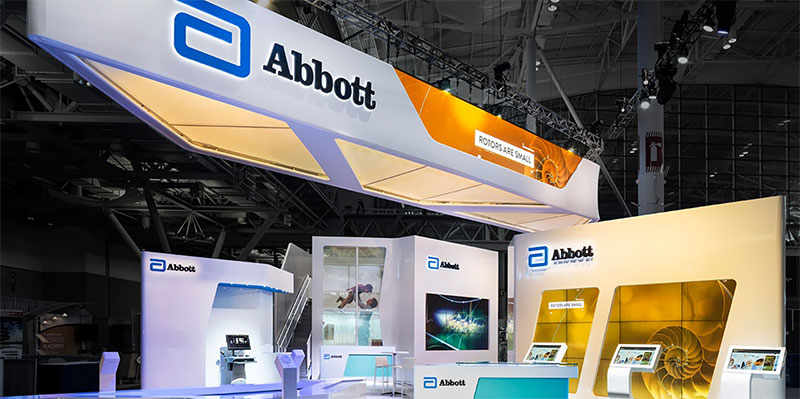A reported 83% of B2B brands say they invest heavily in events, while roughly 63% of event planners base their decision to participate in future events on past performance.
Countless statistics prove companies of all kinds are willing to spend big in hopes that their next event puts them on the map.
With all those dollars flowing into the event space, event reports, naturally, are a pretty big deal. They’ll back up your commitment to that AR experiment and reveal that maybe you didn’t promote your event app as much as you should have.
Here are the KPIs that event planners and their marketer colleagues should use to measure the success of their next big event.
Web Traffic
Web traffic can reveal a lot about interest in your event, as well as which channels are providing the best return on investment. Take to your Google Analytics dashboard to review the following metrics:
- Number of sessions: How many website visits are you seeing?
- Channels Driving the Most Traffic: Where is the bulk of your traffic coming from? Organic search? Social media? Referral sites? Your app? Is one channel underperforming or doing all of the work?
- Bounce rate: How long do visitors spend on your site? What percentage of those visitors leave immediately?
- Engagement: How long do people spend on your site and how many pages do they visit?
- Devices: Which devices generate the most traffic?
Ultimately, reviewing traffic metrics throughout the process will give you a few starting points for improving your promotion strategy. For example, if mobile traffic seems low, check that your website is optimized for mobile.
Or, let’s say the bulk of your traffic comes from LinkedIn and Twitter. Look at your audience breakdown and posting history to see what you may have been doing right on these networks.
Not every channel is right for every brand—so double-check that you’re targeting the right people. If so, maybe it means that something is a bit off with your Facebook strategy. Or, maybe you need to increase your ad spend in the weeks leading up to the event.
Registration Data
- Number of Registrations: This may well be the most important event report metric, it lets you know that your marketing messages were received and that they had the desired impact on your audience. Low registration rates mean that you’ll want to look at your event reports to identify whether something was wrong with the method, the distribution method, or both.
- Registration Time: Was there a registration spike during the early bird promo or a social media campaign? Look for patterns to understand which efforts are driving the most action. Is your audience motivated by discounts, or did a certain speaker announcement get people excited?
- Registration Sources: Is there a specific channel driving the most registrations? If so, what do you know about that audience? Is the demographic breakdown different than it is on other channels?
- Event Check-Ins: No matter how well we spread the word or how good the speakers, there will always be a handful of registrants that won’t check-in–this list below breaks down several of these reasons. This KPI is important as it can help you identify any unusual discrepancies between attendees and no-shows.
Social Engagement
Social activity will tell you a lot about the health of your event.
As you begin promoting your event, you can use social media metrics to gauge interest and impact of discounts, promotions, and paid ad spend.
Here’s a list of data points you might collect:
- Likes
- Comments
- Shares
- Mentions
- Clicks
- Hashtag Use
- New Followers
- Keywords Used
- Impressions
And, that’s just the tip of the iceberg. As such, it’s hard to identify which social media metrics are useful, and which fall into the “vanity” category.
Impressions, for example, won’t tell you much about what people think about your content, your brand, or your event. On their own, impressions just let you know how many people could have potentially seen your post.
However, if you look at how many likes/clicks/comments a post receives and compare that to the number of impressions, then you can start to learn which posts drive the most engagement.
Knowing this, you can refine your social media strategy to better connect with your audience and grow your organic reach. We should mention that you should kick off your plan with a baseline for your social metrics.
Here’s an example from a RivalIQ report on social media engagement by industry, which shows average Facebook engagement:
During the event, you’ll want to look at how people are interacting on social media as they move through the show.
- Are they sharing branded hashtags?
- How often was the event hashtag used?
- If live-streaming the event, how many people tuned in to watch?
- How engaged is the community?
- Are people talking about your brand?
- Are any posts going viral?
- Is one channel performing better than the others?
Event App Activity
Using a dedicated event app is kind of a gamble for a lot of companies. You’ll need to promote the tool and convince users it’s worth downloading.
The first thing to track here is downloads. This will give you a sense of how effective your promotional efforts are.
As such, you’ll want to pay close attention to how people use the app and how often. Not only does this metric help you understand whether the app was worth the investment, but it also paints a picture of the attendee experience.
There are several things you can look at here—messages sent, profiles viewed, messages received, features used, etc. For example, an influx of messages between attendees ahead of the event suggests people are aiming to set up meetings in advance.
After the event, the number of messages sent/received indicates people are following up with new contacts. You might compare the amount of pre-event messages to post-event messages. If the number goes up, it could suggest that attendees felt that they made valuable connections on-site.
On its own, app activity doesn’t tell you whether people enjoyed themselves or if there were elements of the event that were frustrating or not useful. However, comparing app activity to post-event feedback may help you identify some correlations you can use to improve the experience at your next event.
Attendee Satisfaction
At the event, it’s smart to capture attendee satisfaction in real-time. This links back to the idea of measuring social engagement, but it’s a bit more specific.
Track posts, likes, shares, and hashtag use related to the event across all channels to get a pulse on how people feel about the event as they experience it.
Post-event, the best way to find out if attendees enjoyed the event is to ask them. Here, you’ll want to survey your audience to find out what they liked, didn’t like, and what they’d like to see next time.
Be specific when crafting your questions and ask customers to rate responses on a numeric scale. Leave a few lines after each item so attendees can explain why they gave the answer they did.
An excellent place to start is the tried and true Net Promoter Score. This metric is a universal KPI that asks this basic question—on a scale from 1-10, how likely are you to recommend product/service to a friend?
Medallia offers a helpful breakdown here if you want more specifics on how to calculate NPS scores.
A few things you may want to include in your post-event survey:
- How likely are they to return?
- How likely are they to purchase in the next 30 days?
- How valuable was this event from a business standpoint?
Leads Generated
If the goal of this event is to fill up the sales pipeline, then you’ll want to review the number of qualified leads generated from the event.
Qualified leads are defined as leads that have a clear need for your product/service and have the budget and authority to make a purchasing decision.
A few things to include in your event reports:
- Look at the number of opportunities generated and the value of each opportunity.
- Are there target accounts or “big fish” opportunities in the pipeline?
- Where do these leads fall in terms of pipeline stages? What’s the breakdown? How many opportunities are nearing the “close” stage?
- Segmentation? What industry, region, use case do new leads represent? Any patterns?
- How many of these opportunities were in progress before the event? Were they accelerated?
After reviewing how many qualified leads came out of this experience, you’ll want to look at how many new customers you’ve acquired.
Beyond looking at new customers, review the cost of acquiring each new account.
It’s easy to get caught up in the thrill of bringing a new customer on board, but cost per acquisition is a big deal, too.
Understanding this metric allows you to consider the amount of time and money that goes into locking down a deal.
Knowing exactly what it takes to make a deal happen can highlight some areas that need work.
Solid Event Strategy Means Better Event Reports
Bottom line: event success boils down to money in the bank and new leads in the pipeline.
Getting to that point means delighting your audience at every stage, whether that’s delivering engaging content on LinkedIn or building in-booth experiences that speak to specific pain points.
Run event reports regularly, reviewing the above KPIs to see if you’re on track to meet or exceed event goals.
If you need help understanding the stuff great event reports are made of, get in touch. Echelon Design builds custom booths and event experiences that activate and engage audiences in person.
We also build marketing strategies and video content aimed at getting the right people where you need them.







